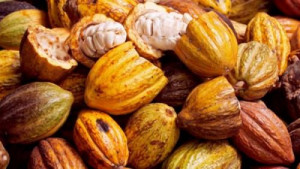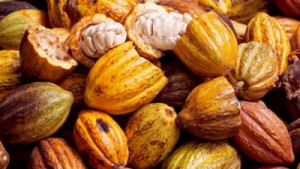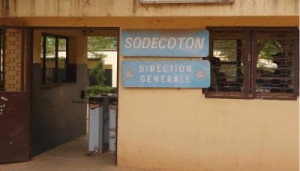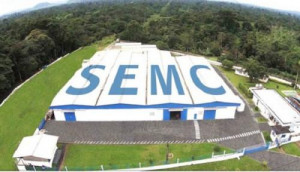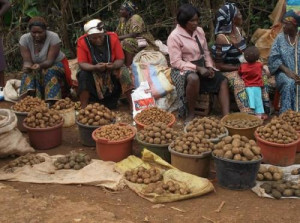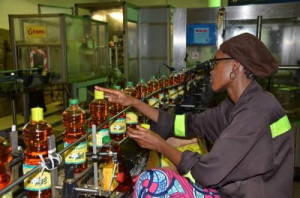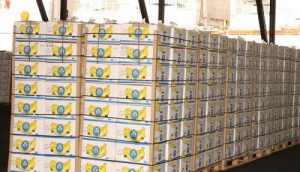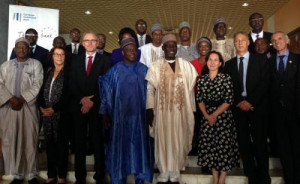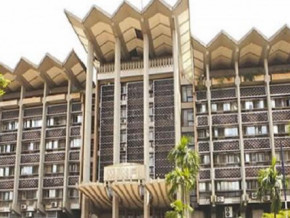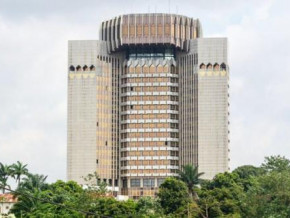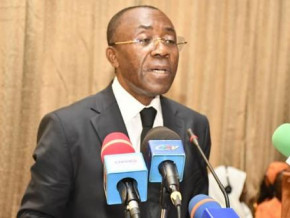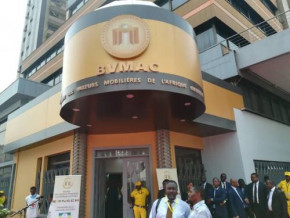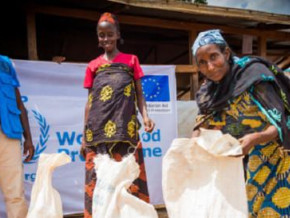
Cameroon’s Sodecoton achieves highest performances in 15 years, during the 2018-19 campaign
Cameroon’s cotton development corporation Sodecoton, which supervises more than 250,000 cotton producers in the three northern regions, ended the 2018-19 campaign with a turnover of about XAF140 billion. Information was obtained following a Board meeting held on May 31 in Yaoundé.
This is the best achievement since 2004 and it makes a 60,000 tons increase in production over the period reviewed. Authorized sources revealed that cotton output in Cameroon reached 316,100 tons in 2018-19 against 254,000 the previous campaign; highest performance in 15 years.
Good operating performances also reaped a profit of XAF5.1 billion, 5 times that of the previous year (XAF1.2 billion); also a record figure never achieved since 2004.
These results translate the effectiveness of reforms implemented to boost growth within this company which run cumulative losses of more than XAF35 billion successively in 2013-14, 2014-15, and 2015-16. The recovery plan initiated by Sodecoton’s top management in 2016 consisted in upgrading the rolling stock and reducing field-factory transport time, thus avoiding cotton wetting.
Reforms also cover the rehabilitation of production tools that made it possible to run equipment at 90% of their capacity, against 50% before; the reorganization of the trade system for cotton oil and byproducts, which once benefited most direct sellers whose significant fee made the products expensive for the end consumer.
By mid-2016, due to poor sales of Diamaor oil, Sodecoton still had a stock of 149,000 packs and 4 million liters of unpackaged oil. Loosened conditions to acquire approvals and rewards to best vendors enabled, according to official sources, to sell stock and increase sales of the Diamaor brand by 64% between 2016 and 2018. This performance increased turnover by XAF7 billion in the vegetable oil segment by the end of 2018.
Brice R. Mbodiam
Cocoa farm gate's maximum price drops again this week in Cameroon
During the week that started on May 27, the maximum price per kilogram of cocoa beans in Cameroon’s production areas slightly dropped again, according to data compiled by the Sectors Information System (SIF).
Price slid by XAF20 from the XAF1,080 a week earlier to XAF1,060. This is the lowest top price in a month, after it reached XAF1,200. The decrease in cocoa price can be explained, SIF said, by difficulties in accessing production areas due to poor road conditions caused by heavy rains.
BRM
Barry Callebaut to strengthen investments in Cameroon
Barry Callebaut, a leading cocoa grinder, is planning to strengthen investments in Cameroon to ramp up the country’s cocoa production. In that regard, CEO Antoine de Saint-Affrique, who owns Barry’s local subsidiary -Cameroon Cocoa Industrial Corporation (Sic Cacaos) - met with President Paul Biya on May 22, and with the Economy Minister, Alamine Ousmane Mey, the following day.
“Sic Cacaos has being processing cocoa in Cameroon for 70 years now. With the authorities, we discussed how we can improve both the quality and the volume so that the processing activity continues to flourish and better contribute to Cameroon’s development,” says Antoine de Saint-Affrique.
According to the economy minister, the collaboration with Barry intends to add value to the sector and enable the country to improve its trade balance by offering quality products at a price that meets the expectations of Cameroonian farmers.
Sic Cacaos ground nearly 53,000 tons of cocoa during the 2017-2018 season, according to latest data.
S.A
Cameroon: Cocoa price slightly down by XAF20 this week
After a price stagnation above XAF1,000 per kilogram for two months, then a rise to XAF1,200 during the second week of May 2019, the price of a kilogram of cocoa beans in Cameroon is back on the downward trend.
According to data compiled by the Sector Information System (SIF), price fell to a maximum of XAF1,080 on 21 May, with a minimum of XAF1,030; a decline by XAF20 compared to the range of XAF1,050 to XAF1,100 last week.
Producers now fear that this decline will be worse in the coming weeks due to persistent rains, which make it difficult to access the main production areas.
BRM
Cameroon: Sodecoton reports record cotton production of 309,000 tons in 2018-19
Cameroon cotton development corporation (Sodecoton) announced it has achieved a record cotton production of 309,000 tons during the 2018-19 campaign.
“Sodecoton benefited from exceptional actions by defense forces in the fight against Boko Haram in the Far-north which eased the return of cotton growers to fields from where they had fled. This increases production,” hailed the company’s top management, according to which the feat would not be achieved if not for efforts by defense forces.
As a reminder, Sodecoton struggled to produce 250,000 tons of cotton during the previous campaigns but since the company initiated a recovery plan a few years ago, things are getting gradually better. Recovery plan targets the renovation of rolling stock that transports production from fields to factories, and the modernization of production machinery which already made it possible to run equipment at 90% of their capacity against 50% before.
Let’s note that Sodecoton monitors over 250,000 producers across Cameroon
S.A
SABC will not shut down long loss-making subsidiary Semc
DSX-listed Société des eaux minérales du Cameroun (Semc), subsidiary of brewer SABC, will not be shut down. This is the outcome of a shareholders’ meeting held on May 15 in Douala.
“In accordance with the provisions of Article 664 of the Uniform Act on the Law of Commercial Companies and the economic initiative grouping, the General Meeting, acting under the quorum and majority conditions required for extraordinary general meetings, decides not to pronounce the early shut down of the Company and to continue its activity.”
However, due to its situation, Semc “will be required, at the latest at the end of the second financial year following that in which the losses were originally recorded, to reduce its capital by an amount equal to that of the losses which could not have been offset against the reserves if, within that period, the shareholders' equity has not been restored to a value at least equal to half the share capital.”
At the end of the financial year that ended December 31, 2018, the company’s equity were and are still lower than half of the share capital; a consequence of the successive losses over at least the past three years.
The company ended FY2016 and FY2017 with negative results of -XAF316 million and -XAF936 million respectively. Last year, despite a slight increase in turnover (3.8% or XAF6.4 billion) Semc run a negative result of -XAF799 million.
In fact, Semc, which dominated the local mineral water market until 2015, is now facing a stiff competition, particularly with the strong return of Source du Pays, market leader since 2016, which has being off the market for a few years.
Semc's shareholders hope to return into profitability this year with their “vital” brand whose sales have been growing steadily since its launch.
In 2018, authorized sources said, this more affordable brand gained 8.5% market shares thanks to 157.7% year-on-year increase in the sales of the 10-litre packaging.
Brice R. Mbodiam
80% of Cameroon’s potato production comes from the West and Northwest (GIZ-Procisa)
Potato production in Cameroon is dominated by the west and northwest regions, data from GIZ’s Green Innovation Centers for the Agriculture and Food Sector project (GIZ-Procisa) showed. The two regions account for 80% of production, ahead of Adamaoua.
According to these data, the national potato production has varied between 220,000 and 400,000 tons over the past decade, depending on the weather, far below the annual average of 1 million tons demanded on the local market.
Experts said the main challenges to higher production include the difficult access to seed and non-utilization of improved seeds. They say traditional seeds only produce 7-13 tons per hectare while the improved ones can reach 20 to 40 tons per hectare.
In need to boost production, the GIZ project plans to set farms of improved seeds as to meet the annual seed needs estimated at 2.4 million tons according to the Cameroonian agriculture department.
BRM
Sodecoton: Oil sales up 64%, revenues up XAF7bln in 2016-18
State-owned cotton development company -Sodecoton- is gradually recovering following a decline over the past decade. Official data shows that revenues from the sale of cotton oil reached XAF17.7 billion in 2018 from XAF16.2 billion in 2017 and XAF10.7 billion in 2016, an improvement by XAF7 billion over the 2-year period.
Thanks to this significant upturn, a company executive said, Sodecoton now funds its current operation with revenues from the sale of cotton oil and cake, since March 2017, while it used to resort to loans. “The Diamaor oil (the company’s flagship oil brand) has never been so well on the market. Demand even exceeds offer, despite regular augmentation in production,” the executive said.
Back in mid-2016, due to poor sales of its flagship product, Sodecoton found itself with a stockpile of 149,000 oil packs and 4 million liters of unpackaged oil, all for an estimated value of about XAF9 billion. “This oil (Diamaor), so demanded by Cameroonians, has gone through a severe crisis in recent years, which has taken it off the shelves,” he explained.
“Poor sales were partly due to the high cost price, but mostly due to a marketing channel that benefited direct sellers. The latter acted as middlemen between Sodecoton and wholesalers and quasi-controlled the product. Many wholesalers had to give them margins to get the product. And as spillover effect, margins are recovered from semi-wholesalers, retailers and consumers. Consequence: the price of this oil brand skyrocketed and the product gradually disappeared from the market.”
In response to this situation, the company’s top management undertook as of 2016 to reorganize the marketing segment. Thus, the process to obtain cotton oil sale approval has been made easier and the company has signed performance contracts with sellers, meaning they now receive discounts based on volumes sold. Thanks to this reform, sales increased by 64% between 2016 and 2018.
Comforted by this good evolution, Sodecoton started injecting funds into the modernization and expansion of its oil mills. With a XAF2.5 billion loan contracted with Afriland First Bank, the company doubled capacity of the Maroua oil mill and plans to do the same at Garoua thanks to a XAF6 billion loan granted by the Arab Bank for Economic Development in Africa (Badea).
In the long run, Sodecoton aims to increase the crushing capacity of the two oil mills to 210,000 tons of cotton seeds, from 110,000 tons currently. Production is expected to surge from 1.13 million oil packs in 2019 to 2.15 million packs as soon as work is completed. Construction of a new oil mill is underway in the city of Ngaoundéré, it is reported, with a view to increasing cotton production to 400,000 tons by 2022
Brice R. Mbodiam
Cameroon: Banana export slid to 13,381 tons in April, lowest volume since Jan. 2019
Cameroon exported a total of 13,381 tons of banana in April this year, the lowest volume since the year began, the fruit’s association (Assobacam) said.
In detail and compared to the same period last year, PHP, local subsidiary of French Compagnie fruitière de Marseille and market leader, shipped 12,427 tons over, up 424 tons while Boh Plantations shipped 954 tons, up 82 tons from 872 tons.
But overall volume in April 2019 is 6,500 tons down compared to 17,638 tons exported in April 2019; a drastic decrease caused by non-activity since September 2018 of State-owned CDC which has suspended shipments due to the crisis in the Anglophone regions where the company owns plantations.
The company estimates turnaround financing needs at XAF29 billion. With 22,000 employees, this agro-industrial unit is the country's second largest employer, after the public administration.
Brice R. Mbodiam
Cameroon to dedicate part of next EU budget support to cotton
Cameroon is planning to pump part of the next budget support granted by the European Union to develop agricultural value chains, especially cotton.
Amount to be injected is yet to be known since both parties are still negotiating the total EU support but sources said monies will be granted without any direct return or payment for the period 2020-21.
Cameroon aims to attract a maximum of investments in the sector through loans and grants blending mechanisms. In this wake, the European Investment Bank and the EU delegation in Cameroon organized May 8, 2019, in Yaoundé a forum on cotton sector. The meeting gathered, apart from the government, technical and financial partners, local banks and sector players (growers’ association, Sodecoton, Cicam etc).
Cotton needs XAF60 billion
In the short-term, needs are valued at XAF60 billion. The Cotton Development Corporation (Sodecoton) expressed need of XAF40 billion to increase production from 300,000 tons in 2018 to 400,000 tons in 2022, as planned in its recovery plan.
The company 59%- owned by the government plans two ginning plants (XAF15 billion), a new oil mill (XAF20 billion) and a solar plant (XAF3 billion). Remaining XAF2 billion will strengthen site supervision teams.
Cotonnière industrielle du Cameroun (Cicam) expressed need of about XAF20 billion to cushion past two years’ decline with a view of processing 7,000 tons of cotton-seeds.
Cotton is a major driver of the economy in Cameroon’s northern regions which record highest poverty rate in the country. The fiber is grown over 85,000 km2 and directly sustains 2 million people in the region. Cotton provides 2.5% of Cameroon’s GDP and 5% of the agriculture GDP. It accounts for 4% of overall exports, 15% of agricultural exports and generates XAF30-40 billion per annum. These are all assets that make it attractive to the EU.
During the 5th AU-EU summit held in November 2017 in Abidjan, Côte d’Ivoire, Belgium committed to help limit massive illegal youth migration to Europe. Main focus was placed on poverty and unemployment.
Aboudi Ottou
Mags frontpage
- Most read 7 days
- shared 1 month
- read 1 month



